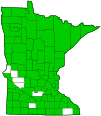marsh skullcap
(Scutellaria galericulata)
Conservation • Wetland • Description • Habitat • Ecology • Use • Distribution • Taxonomy
Description |
||
Marsh skullcap is an erect, perennial forb that rises on one or more stems from a slender underground stem (rhizome) and fibrous roots. It can be 8″ to 32″ in height but is usually no more than 18″ tall. It often produces creeping, horizontal above-ground stems (stolons). It sometimes forms small colonies. The stems are relatively weak, mostly erect or ascending but often leaning on adjacent vegetation. They are sharply four-angled (square), leafy, and branched or unbranched. They usually have short, white, downward-curved, nonglandular hairs on the angles but are otherwise hairless. The leaves are opposite, ¾″ to 2⅜″ long, and ¼″ to ¾″ wide, mostly 2 to 4 times as long as wide. Lower leaves may be stalkless on very short, up to ⅛″ long leaf stalks. The leaves become progressively smaller as they ascend the stem. Middle and upper leaves are stalkless. The leaf blades are lance-shaped to narrowly egg-shaped; broadly squared off, broadly rounded, or shallowly heart-shaped at the base; and taper to a sharp point at the tip. They are pinnately veined, the lateral veins branching and joining before reaching the margin (anastomosing). The upper surface is yellowish green to medium green and hairless. The lower surface is similar in color and usually moderately to densely covered with short, curved, nonglandular hairs and inconspicuous, unstalked glands. The margins are toothed with shallow, usually rounded teeth. The foliage is not aromatic. The inflorescence is single flowers rising from the upper leaf axils. Pairs of flowers, one in each opposite node, face in the same direction, often perpendicular to the pair of leaves. There is no cluster of flowers at the end of the stem. Each flower is on a very short, 1 ⁄32″ to ⅛″ long stalk. The flowers are ¾″ to 1″ long. There are 5 sepals, 5 petals, 4 stamens, and 1 style. The sepals are light green to reddish and ⅛″ to 3 ⁄16″ long. They are united at the base and separated into 2 shallow, broadly rounded lobes at the tip. They do not have a spine at the tip. They are densely covered with short, curved, non-glandular hairs. The petals are united at the base into a long, narrowly funnel-shaped tube and separated at the tip into 2 lips. The tube is bent upward just above the base and downward at the throat, forming an “S” shape. It is blue at the end, fading to white at the base. The upper lip is blue, unlobed, and rounded. It forms a “skull”-shaped hood. The lower lip is spreading or arched, noticeably longer and broader than the upper lip, and shallowly 3-lobed. The lateral lobes are not well developed. They are blue, short, and ascending. The lower lobe is broadly fan-shaped to semicircular and sometimes slightly notched. It is blue with a white patch and purplish-blue spots at the base. The stamens have small anthers and do not project beyond the corolla tube. The style is branched at the tip and does not project beyond the corolla tube. The fruit is a dry seed capsule (schizocarp) with 1 to 4 nutlets. The calyx becomes closed and ⅛″ to ¼″ long in fruit. |
||
Height |
||
8″ to 32″ |
||
Flower Color |
||
Blue with a white patch and purple spots |
||
Similar Species |
||
Blue skullcap (Scutellaria lateriflora) leaves are sharply and coarsely toothed. The inflorescence is a axillary raceme of several flowers paired at nodes. The flowers are much smaller. Heart-leaved skullcap (Scutellaria ovata ssp. ovata) inflorescence is a terminal raceme of several flowers paired at nodes. It is much rarer and restricted to the southeastern border counties. Leonard’s skullcap (Scutellaria parvula var. missouriensis) leaves are very often less than two times as long as wide. The margins are untoothed and often curled under. There are 1 or 2 veins on each side of the midrib. Lateral veins are not anastomosing. The flowers are much smaller, no more than ⅜″ long. It sometimes produces short, white, self-pollinating flowers. |
||
Habitat |
||
Wet. Meadows, marshes, bogs, fens, swamps, stream banks, pond edges, and roadside ditches. Full sun to light shade. |
||
Ecology |
||
Flowering |
||
June to September |
||
Pests and Diseases |
||
|
||
Use |
||
|
||
Distribution |
||||
|
Sources |
|||
| 2/23/2023 | ||||
Nativity |
||||
Native |
||||
Occurrence |
||||
Common and widespread |
||||
Taxonomy |
|||
Kingdom |
|||
| Phylum |
Tracheophyta (Vascular Plants) |
||
Subdivision |
Spermatophytina (Seed Plants) |
||
Class |
|||
Order |
Lamiales (Mints, Plantains, Olives, and Allies) |
||
Family |
Lamiaceae (Mint) |
||
Subfamily |
Scutellarioideae |
||
Genus |
Scutellaria (skullcaps) |
||
Some botanists use the name Scutellaria epilobiifolia for this plant in order to distinguish it from the Old World species. This was rejected in 1942 due to a lack of morphological differences between the Old World and New World plants. More recent genetic analysis shows that the North American plants have a different chromosome number than the plants in Europe and Asia. The two species may be separated again in the future. |
|||
Synonyms |
|||
Scutellaria epilobiifolia Scutellaria galericulata ssp. pubescens Scutellaria galericulata var. epilobiifolia Scutellaria galericulata var. pubescens |
|||
Common Names |
|||
hooded skullcap marsh skullcap skullcap |
|||
Glossary
Anastomosing
Referring to veins, such as on a plant leaf or a lichen, or lines on an insect wing, that branch and rejoin, forming a network.
Axil
The upper angle where a branch, stem, leaf stalk, or vein diverges.
Corolla
A collective name for all of the petals of a flower.
Node
The small swelling of the stem from which one or more leaves, branches, or buds originate.
Pinnately veined
With the veins arranged like the vanes of a feather; a single prominent midvein extending from the base to the tip and lateral veins originating from several points on each side.
Raceme
An unbranched, elongated inflorescence with stalked flowers. The flowers mature from the bottom up.
Rhizome
A horizontal, usually underground stem. It serves as a reproductive structure, producing roots below and shoots above at the nodes.
Schizocarp
A dry fruit formed from a compound ovary that splits into two or more parts (mericarps) at maturity.
Stolon
An above-ground, creeping stem that grows along the ground and produces roots and sometimes new plants at its nodes. A runner.
Visitor Photos |
|||||
Share your photo of this plant. |
|||||
| This button not working for you? Simply email us at info@MinnesotaSeasons.com. Attach one or more photos and, if you like, a caption. |
|||||
Luciearl |
|||||
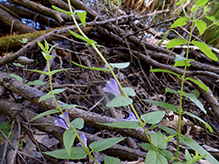 |
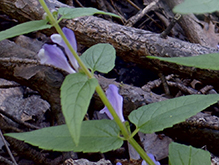 |
||||
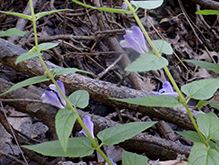 |
|||||
MinnesotaSeasons.com Photos |
|||||
Plant |
|||||
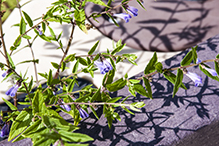 |
|||||
Inflorescence |
|||||
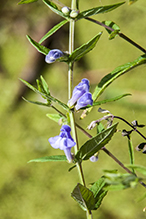 |
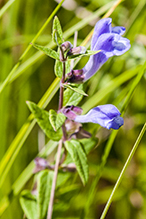 |
||||
Flowers |
|||||
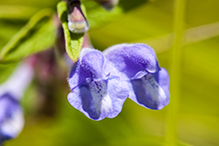 |
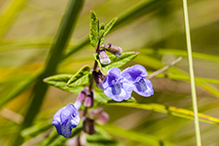 |
||||
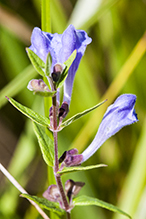 |
|||||
Flower |
|||||
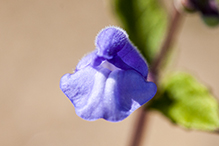 |
|||||
Leaves |
|||||
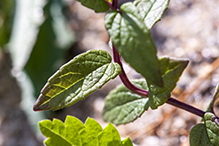 |
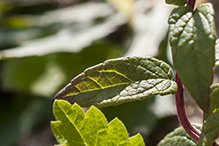 |
||||
Seed Capsule |
|||||
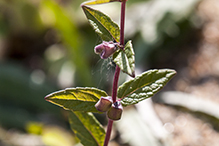 |
|||||

Slideshows |
||
| Common skullcap Andree Reno Sanborn |
||
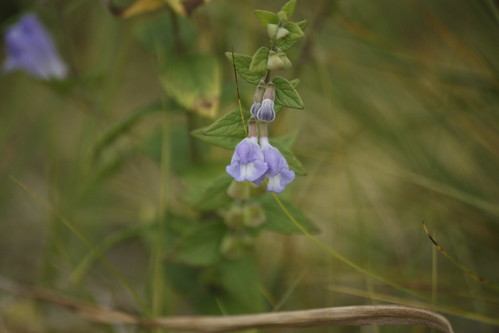
|
||
About
also called marsh skullcap flowers are always in pairs Mint family Scutellaria galericulata |
||
| Scutellaria galericulata (Marsh Skullcap) Allen Chartier |
||
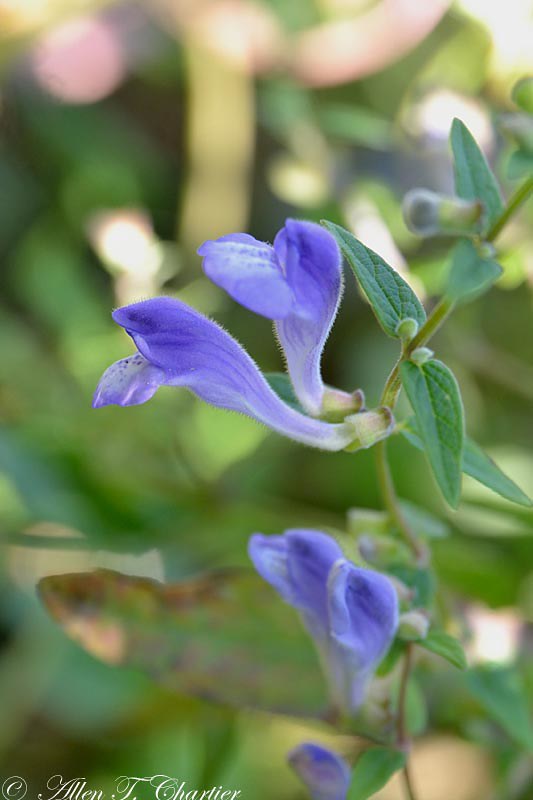
|
||
| Шлемник обыкновенный - Scutellaria galericulata. Лекарственные растения. |
||
About
Published on May 6, 2015 Энциклопедический словарь. Google translation: Encyclopedic Dictionary. |
||

Visitor Videos |
|||
Share your video of this plant. |
|||
| This button not working for you? Simply email us at info@MinnesotaSeasons.com. Attach a video, a YouTube link, or a cloud storage link. |
|||
Other Videos |
|||
| Common Skullcap (Scutellaria galericulata var. epilobiifolia) - 2012-06-14 Westdelta |
|||
About
Published on Jul 31, 2012 Common Skullcap (Scutellaria galericulata var. epilobiifolia), also known as Marsh Skullcap or Hooded Skullcap, is a hardy perennial herb native to northern areas of the Northern Hemisphere, including Europe, Asia, and much of North America. It is a member of the mint family. ---------- 52.05423 4.28188 |
|||
| Common Skullcap (Scutellaria galericulata var. epilobiifolia) - 2012-08-16 Westdelta |
|||
About
Published on Nov 7, 2012 Common Skullcap (Scutellaria galericulata var. epilobiifolia), also known as Marsh Skullcap or Hooded Skullcap, is a hardy perennial herb native to northern areas of the Northern Hemisphere, including Europe, Asia, and much of North America. It is a member of the mint family. ---------- 52.01883 4.32494 |
|||
| Plante din Flora Romaniei, Scutellaria galericulata, Fam Lamiaceae, Muereasca, Valcea Adrian Manolache |
|||
About
Published on Aug 9, 2015 De mai multi ani incerc sa realizez o Video Enciclopedie a Florei din Romania. E o lucrare ampla si inevitabil supusa erorilor. E supusa si alunecusilor, deoarece, mergand in natura, intalnesc multe alte vietati, insecte, reptile, amfibieni, pasari, mamifere si, bucuros de intalnirea cu ele, incerc sa le prind intr-un film, intr-o descriere. Si, adio...plante. Fiind pasionat (si) de ciuperci am gasit atat de multe, identificat si catalogat, incat se pare ca prima va fi gata "Video Enciclopedia Ciupercilor" din Romania. Uneori gresesc, corectez sau sunt corectat (multumesc celor care m-au ajutat si ma ajuta uneori la identificari). Alteori sunt mai superficial sau doar grabit si clipurile nu sunt chiar ce ne-am dori de la ele. Imi asum tot ce filmez si nu am pretentii academice. Este un drum pe care am pornit fara niciun fel de sustinere materiala si nici nu-mi doresc; desi sunt biolog nu sunt angajat al vreunei institutii, nici al vreunei firme si fac acest lucru din pasiune. Aceasta realitate incetineste putin demersul meu, dar nu il face imposibil. Am venit cu aceste elemente introductive pentru a incerca sa domolesc din avantul lor pe cei care, in comentarii, ma injura, calomniaza, jignesc, folosesc un limbaj suburban, amenintator, etc. Sigur ca exista clipuri care nu plac, dar eu le privesc in ansamblul lor, privesc la imaginea finala. Si pentru ea merg mai departe. Cand mergi in natura cautand plante, primele care iti atrag atentia sunt plantele inflorite. Florile ne momesc ca un magnet in universul lor de culoare, arhitectura, miros. Am mizat sa filmez plante inflorite pentru ca ele sunt calauza cea mai simpla spre identificarea corecta a lumii vegetale. Cand nu am gasit flori, am filmat alte elemente morfologice caracteristice unei specii sau alteia. Nu am reusit intotdeauna sa gasesc cele mai reprezentative exemplare. Nici nu mi-am dorit acest lucru. Unele specii rare sunt suficient sa le intalnesti macar o data in viata. Dupa ce ai parcurs zile intregi cautandu-le, te bucuri si daca intalnesti un exemplar mai amarat, sa spunem. Filmele mele cu plante si despre ele se pot grupa astfel: 1.Clipuri scurte in care descopar o floare, o planta, un arbust, un arbore...si filmez intalnirea pentru o enciclopedie floristica, simpla, vizuala, in care vor fi asezate Ordine, Familii, Specii, intr-o derulare rapida fara pretentii de etalon de identificare. 2.Filme mai lungi in care fac descrierea plantei respective cu elemente de identificare, ocurente, perioada de vegetatie si, mai ales, utilitatea ei practica. Flora spontana este o sursa de medicamente vegetale de exceptie. Ceaiuri, tincturi, unguente, esente...nenumarate formule fitoterapeutice pot fi folosite in vindecare. Daca exista, insist asupra importantei alimentare a plantei respective, intr-o lume in care hrana noastra devine tot mai chimica si artificiala, cauzand toate maladiile "moderne". 3. Simple clipuri in care descopar o frumusete aparte intr-o anumita specie vegetala, fie o lumina avantajoasa, fie o fructificatie deosebita, o floare, o umbra, o insecta in vizita, o asociere de plante, o malformatie, ceva nou care m-a atras sa o filmez. Google translation: For several years trying to do a Video Encyclopedia of Flora in Romania. It's a work subject to extensive and inevitable errors. It's subject and slipperiness because walking in nature, meet many other creatures, insects, reptiles, amphibians, birds, mammals and happy meeting with them, I try to catch a movie in a description. And goodbye ... plants. Being passionate (and) mushroom I found so many identified and cataloged, it seems that the first will be ready "Video Encyclopedia Mushroom" from Romania. Sometimes I'm wrong, correct or corrected (thanks to those who helped me and helping me sometimes identifications). Others are only superficial or rushed and clips are not what we want from them. I take everything I shoot and academic claims. It is a path that we started without any material support or do not want; biologist although not an employee of any institution or any company and do this out of passion. This actually slows least my approach, but does not make it impossible. I came up with these introductory elements to try to tame those of their momentum in the comments, I swear, slander, insult, use a suburban language, threatening, etc. Sure there are clips that do not like, but I watch them in their entirety, look to final image. And it go further. When you go looking in nature plants, the first that strikes you are the flowering plants. Flowers entice us like a magnet in their universe of color, architecture, smell. I staked to film blooming plants because they are the easiest guide to correctly identify the plant world. When I found flowers, filmed other morphological features characteristic of a species or another. I have always managed to find the most representative specimens. Nor do I want this. Some rare species are sufficient to meet at least once in their life. After having traveled for days searching for them, enjoy and if you meet one copy bitter, say. My films about plants and they can be grouped as follows: the short 1.Clipuri discover a flower, a plant, a shrub, a tree ... and shoot for an encyclopedia meeting floristry, simple, visual, which will be placed Order, Family, Species, a fast-standard identification without pretensions. 2.Filme longer in forming plant with the description of identification elements, occurrences, vegetation period and, especially, its usefulness practice. The spontaneous flora is a source of exceptional herbal medicines. Teas, tinctures, ointments, herbal essences ... countless formulas can be used in healing. If there are, I insist on the importance of that power plant, in a world where our food is becoming increasingly artificial and dry, causing all diseases "modern". 3. Simple clips in which I discover a beauty in a particular plant species, be advantageous light or a special fructification, a flower, a shadow, a visiting insect, plant association, a birth, a new me attracted to shooting. |
|||

Visitor Sightings |
|||||
Report a sighting of this plant. |
|||||
| This button not working for you? Simply email us at info@MinnesotaSeasons.com. Be sure to include a location. |
|||||
| Luciearl 7/11/2020 |
Location: Fairview Twp, Cass County |
 |
|||
MinnesotaSeasons.com Sightings |
|||||

|
Created: Last Updated: © MinnesotaSeasons.com. All rights reserved. |
